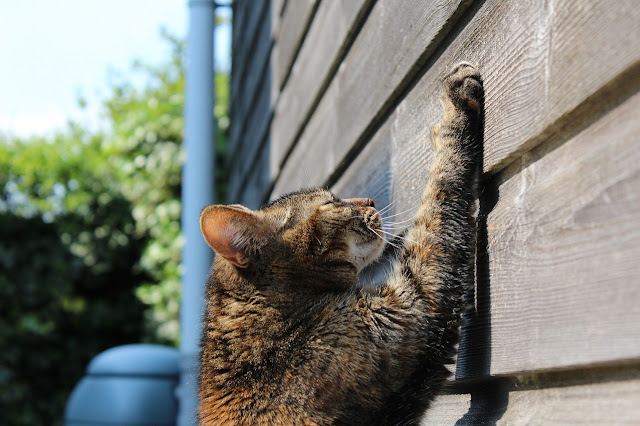Cats have a natural need to scratch. They claw objects as a marking post and also to remove old layers of nails from their claws.
When an adult cat scratches, it draws attention to the marks with its feet and then leaves a scent from glands in its paws on the scratched area. By scratching walls your cat is putting his mark on your home and territory.
Why does cat scratch wall
1. To mark territory
Cats are known to have an amazing sense of smell. They express their ownership of objects by marking them with their scent glands through scratching. They deposit a substance on the object, which is called a 'cat claw'. This substance has a unique smell that tells other animals that this is his or her property.
2. To condition claws
Cats condition their sharp nails by scratching with them on a rough surface. The scratching action serves to file down the claw and remove the outer layer of dead keratin. Cats do this activity daily in order for their claws to remain clean, healthy, and strong.
3. To stretch muscles
Cats have a natural need to stretch and condition their legs, back, and neck muscles. They do this activity by reaching up to a surface that they can grab such as scratching on a wall or on pieces of furniture.
4. To remove the dead outer layer of claws
Stretching and scratching help in removing the dead claw layer. It also ensures that the claw does not get too long and starts curving or splitting. This can be prevented by regular nail trimming, performed at least once each month.
5. To mark territory with their scent glands
Cats have scent glands in their paws and they transfer this scent to the object when they scratch on it. This is a form of feline communication, which tells other animals that this territory is occupied or claimed by a certain cat.
6. To get rid of negative energy
Cats get rid of the excess energy that builds up in their bodies. This energy comes from the natural instinct to hunt for food. Scratching helps in getting rid of pent-up frustration by giving an outlet for their hunting instincts and needs.
7. To relieve stress and anxiety
Cats get stressed when they are confined or kept indoors for a long time such as on weekends or during vacations. Stress can also be brought about by being left alone or even when they are not allowed to go out. Scratching is a way for the cat to ease the effects of stress and anxiety. In addition, scratching helps in their mental stimulation which can keep them from getting bored.
8. To express feelings
Cats express their emotions through scratching. They do this by scratching or not scratching at certain objects depending on how they feel. A cat that is feeling affectionate and wants to be near its owner will scratch the furniture near them where its owner is most likely to be found.
9. To sharpen claws
Cats use sharpening of the claws as part of their routine since this is something that they need to do each day. Scratching at surfaces or items helps in sharpening their claws by removing the outer layer of dead keratin while filing them down. Nail trimming every month will ensure that the cat's nails are not too sharp, keeping them from accidentally harming themselves.
10. To provide entertainment
Scratching can be considered an activity that provides entertainment for the cat and its owner. They get to sharpen their nails, stretch out and mark territory by leaving scratch marks around the house or wherever they choose to scratch at. Watching a cat perform scratching activities is also enjoyable for many pet owners.
Conclusion:
As you can see, cat scratching is a normal thing that cats do when they are happy and content. They have to fulfill their natural needs each day by stretching out, sharpening their claws, and marking their territory around the house with their scent glands. This behavior should be encouraged naturally rather than through training or punishing them because it is also something that they need to do in order to be in good physical and mental health.

